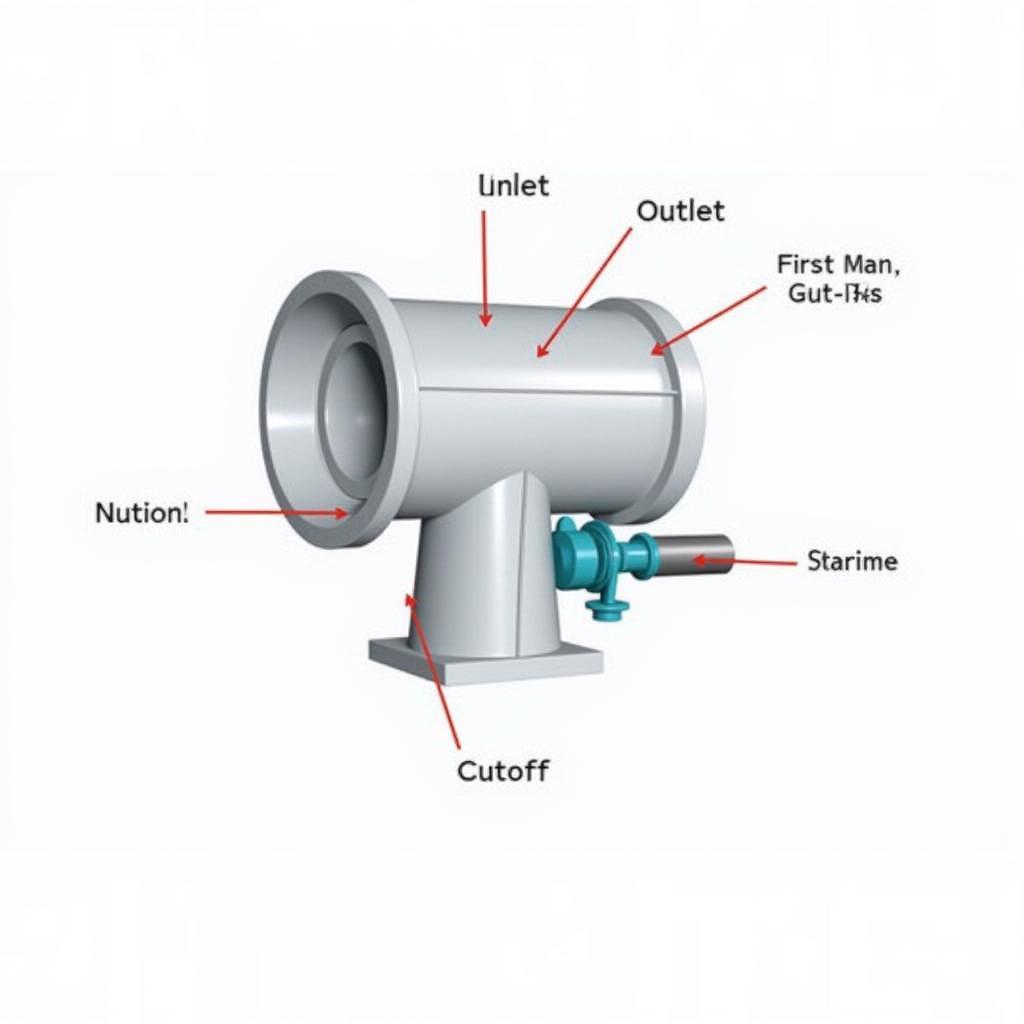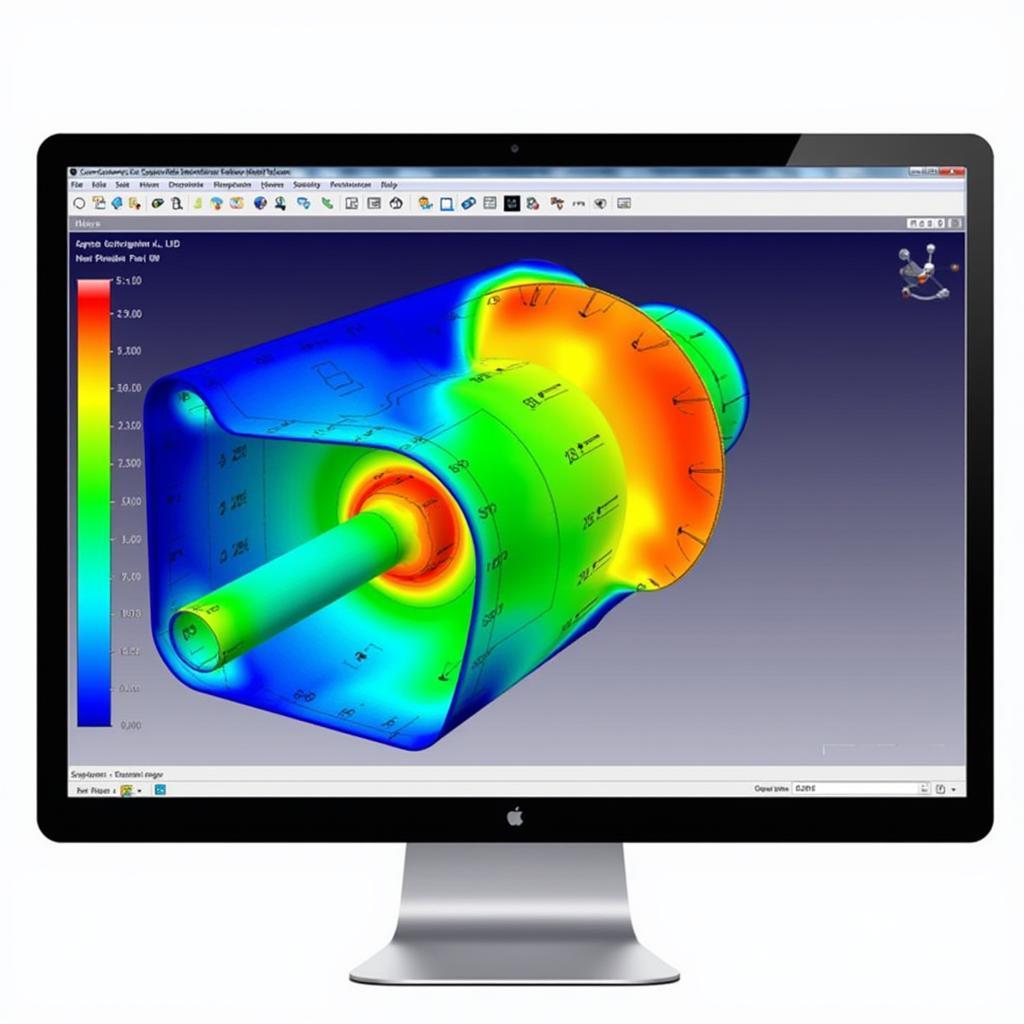Centrifugal Fan Housing Design plays a critical role in the overall performance and efficiency of these essential industrial components. A well-designed housing optimizes airflow, minimizes energy consumption, and ensures long-term reliability. This guide delves into the intricacies of centrifugal fan housing design, covering key aspects from fundamental principles to advanced considerations.
 Centrifugal Fan Housing Components Diagram
Centrifugal Fan Housing Components Diagram
Understanding the Basics of Centrifugal Fan Housings
Centrifugal fan housings, often referred to as scrolls or volutes, serve as pressure vessels directing the flow of air or gas propelled by the rotating impeller. Their primary function is to convert the kinetic energy of the moving air into static pressure, enabling efficient air movement for various applications, including ventilation, material handling, and combustion processes.
Key Factors Influencing Centrifugal Fan Housing Design
Several crucial factors dictate the design of a centrifugal fan housing, each influencing the fan’s performance, efficiency, and noise output.
1. Fan Type and Application
The intended use of the centrifugal fan significantly impacts its housing design. Different applications require varying airflows, pressures, and noise levels, leading to design variations. For instance, industrial centrifugal fans used in heavy-duty applications often feature robust housings built to withstand high temperatures and pressures.
2. Airflow and Pressure Requirements
The desired airflow and pressure characteristics are crucial design considerations. The housing’s shape, size, and inlet and outlet dimensions are carefully calculated to achieve the target performance parameters.
 Airflow Patterns within a Centrifugal Fan Housing
Airflow Patterns within a Centrifugal Fan Housing
3. Efficiency Optimization
Minimizing energy consumption is a primary concern in fan design. The housing’s aerodynamic profile, along with the design of its inlet and outlet, plays a vital role in reducing pressure drops and maximizing energy efficiency.
4. Noise Control
Centrifugal fans can generate significant noise levels. Housing design incorporates features like sound-absorbing materials and aerodynamically optimized shapes to minimize noise pollution, a critical factor in many applications, particularly in noise-sensitive environments.
5. Material Selection
The choice of materials for the fan housing depends on factors such as the operating temperature, pressure, and corrosive properties of the handled air or gas. Common materials include steel, stainless steel, and fiberglass-reinforced plastic (FRP).
Types of Centrifugal Fan Housing Designs
Centrifugal fan housings come in various designs, each optimized for specific applications and performance characteristics.
1. Scroll Housing
The most common type, scroll housings feature a gradually expanding cross-sectional area from the impeller outlet to the discharge. This design efficiently converts velocity pressure into static pressure.
2. Conical Housing
Conical housings have a straight, tapered shape, offering advantages in compactness and ease of manufacturing. However, they may not be as efficient as scroll housings in converting velocity pressure.
3. Tubular Housing
Tubular housings are cylindrical and primarily used for inline applications where space is limited. They offer low pressure development but can be suitable for specific applications like dust collection.
Advanced Design Considerations
Modern centrifugal fan housing design leverages computational fluid dynamics (CFD) analysis and other advanced techniques to optimize performance further and address specific challenges.
1. CFD Modeling
CFD simulations allow engineers to visualize and analyze airflow patterns within the housing, identifying potential areas of turbulence, pressure drop, or flow separation. This information is crucial for fine-tuning the design to achieve optimal efficiency and noise reduction.
2. Finite Element Analysis (FEA)
FEA is used to assess the structural integrity of the housing under various operating conditions. By simulating stress and strain distributions, engineers can ensure the housing can withstand the mechanical loads imposed during operation.
3. Erosion and Corrosion Protection
In applications handling abrasive or corrosive materials, the housing’s interior may be lined with wear-resistant materials or coatings to extend its lifespan.
 CFD Analysis of Airflow in a Centrifugal Fan Housing
CFD Analysis of Airflow in a Centrifugal Fan Housing
Conclusion
Centrifugal fan housing design is a complex and multifaceted process, requiring a deep understanding of fluid dynamics, material science, and manufacturing techniques. By carefully considering the factors outlined above and leveraging advanced design tools, engineers can create highly efficient and reliable centrifugal fans that meet the diverse needs of industrial applications.
FAQs
1. What is the purpose of a cutoff in a centrifugal fan housing?
A cutoff is a plate located near the impeller outlet, designed to minimize recirculation of air within the housing, improving efficiency and reducing noise.
2. How does the shape of the housing affect fan performance?
The housing’s shape directly influences the airflow path and pressure conversion. A well-designed housing minimizes pressure losses and ensures smooth airflow.
3. What are the advantages of using CFD in fan housing design?
CFD allows engineers to visualize and analyze airflow patterns, identifying potential issues like turbulence and pressure drops, enabling optimization for efficiency and noise reduction.
4. How can I reduce noise levels from my centrifugal fan?
Noise reduction can be achieved through various design modifications, including using sound-absorbing materials in the housing, optimizing airflow paths, and ensuring proper fan selection and installation.
5. What materials are commonly used for centrifugal fan housings?
Common materials include steel, stainless steel, and fiberglass-reinforced plastic (FRP). The choice depends on factors like operating temperature, pressure, and the handled air’s corrosive properties.
Need Help with Your Industrial Fan Needs?
For expert advice on HRW fan selection, commercial utility exhaust fans, or commercial HVAC ventilation fans in Austin, TX, our team is here to assist. We can help you select the right industrial centrifugal fan blower for your specific requirements.
Contact us at Phone Number: 0903426737, Email: fansbongda@gmail.com, or visit our office at Group 9, Area 6, Gieng Day Ward, Ha Long City, Quang Ninh, Vietnam. Our dedicated customer support team is available 24/7.


